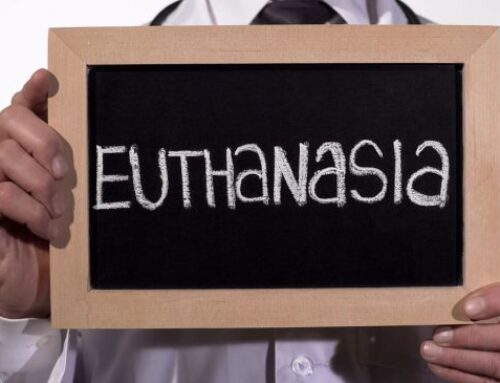The April 2 decision of a federal appeals court in New York brings a chilling new twist to the assisted suicide debate.
In a unanimous decision, the three-judge panel of the 2nd US Circuit Court of Appeals ruled doctors can legally help terminally ill patients end their lives.
“What interest can the state possibly have in requiring the prolongation of a life that is all but ended?” the judges said in striking down a longstanding New York state ban on assisted suicide.
This marks the second such ruling in recent weeks. In March, the 9th US Circuit Court overturned a Washington state ban on doctor assisted suicide.
While both decisions weaken legal safeguards against an over-zealous pro-euthanasia mentality, the New York ruling is particularly relevant. In effect, it allows a doctor a more active role in hastening the death of terminally ill patients.
New York’s Attorney General Dennis Vacco plans to appeal the decision to the US Supreme Court. He said that instead of favouring the preservation of life, the ruling gives doctors “a licence to kill.”
The ruling allows doctors to prescribe drugs hasting the death of terminally ill patient. The patient must be mentally competent and must request such action. Previously, patients could ask doctors to withhold treatments that might prolong their lives, but they were barred from asking physicians to actively administer life-ending treatments.
Pro-life groups immediately attacked the New York decision as further evidence of a diminished respect for life. A spokesperson for the U.S. Catholic Conference said the ruling “is further evidence of a depreciating of human life in our society, a depreciation that the courts seem to be buying into hook, line and sinker.”
The American Medical Association also expressed grave reservations about the New York ruling. In a recent editorial, the associated noted, “the acceptance of physician-assisted suicide is a sign of failure to help patients in need—not a victory to be celebrated. It is sadly true that medicine could do much more for patients at the end of life then it has.”
While doctor assisted suicide remains an offence under the Canadian Criminal Code, pro-life supporters fear a growing public tolerance for the practice. This is seen not only in court decisions, but in a sympathetic media which often gives favourable treatment to Jack Kevorkian; the Michigan based “Doctor of Death” who is leading an aggressive right to die crusade.
The New York court ruling raised the stakes in the assisted suicide demand in North America. Just over three years ago, Canadians watched with interest as the details of the Nancy B. case unfolded. At the time, Canadian public opinion was divided on the question of discontinuing a respirator from Nancy Boulduc, a young women suffering from a rare neurological disease. A protracted court case eventually ruled the patient had the right to be removed from the respirator even though the action would lead directly to her death.
Some pro-life supporters argued that the court ruling in the Nancy B. case was an endorsement of euthanasia. Others however, believed the women required extraordinary means to maintain her life and therefore should have been given more latitude in her decision.
Shortly afterward, the Sue Rodriguez case focused attention on Canada’s law prohibiting assisted suicide. Rodriguez, a victim of Lou Gehrig’s disease sought to end her life with the help of a sympathetic physician. Although the law survived Rodriguez’ constitutional challenge, her case generated additional support for assisted suicide legislation.
If the Nancy B. and the Sue Rodriguez cases are seen as endorsements for passive euthanasia, the New York court ruling is a frightening next step. The ruling is one more instance of courts determining policy on complex social issues. Pro-life and pro-family supporters point to the abortion situation as a harmful example of social policy being hammered out in courtrooms rather than in Parliament or Congress




